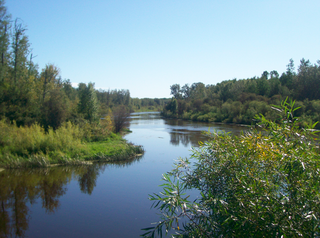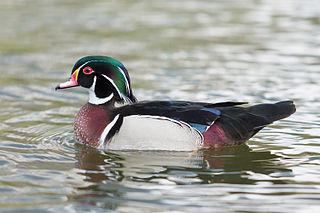
Nature conservation is the moral philosophy and conservation movement focused on protecting species from extinction, maintaining and restoring habitats, enhancing ecosystem services, and protecting biological diversity. A range of values underlie conservation, which can be guided by biocentrism, anthropocentrism, ecocentrism, and sentientism, environmental ideologies that inform ecocultural practices and identities. There has recently been a movement towards evidence-based conservation which calls for greater use of scientific evidence to improve the effectiveness of conservation efforts. As of 2018 15% of land and 7.3% of the oceans were protected. Many environmentalists set a target of protecting 30% of land and marine territory by 2030. In 2021, 16.64% of land and 7.9% of the oceans were protected. The 2022 IPCC report on climate impacts and adaptation, underlines the need to conserve 30% to 50% of the Earth's land, freshwater and ocean areas – echoing the 30% goal of the U.N.'s Convention on Biodiversity. Ultimately, these movements should be further promoted to encourage biodiversity and to conserve a functional ecosystem.

Human ecology is an interdisciplinary and transdisciplinary study of the relationship between humans and their natural, social, and built environments. The philosophy and study of human ecology has a diffuse history with advancements in ecology, geography, sociology, psychology, anthropology, zoology, epidemiology, public health, and home economics, among others.
Environmental archaeology is a sub-field of archaeology which emerged in 1970s and is the science of reconstructing the relationships between past societies and the environments they lived in. The field represents an archaeological-palaeoecological approach to studying the palaeoenvironment through the methods of human palaeoecology. Reconstructing past environments and past peoples' relationships and interactions with the landscapes they inhabited provides archaeologists with insights into the origin and evolution of anthropogenic environments, and prehistoric adaptations and economic practices.

Environmental psychology is a branch of psychology that explores the relationship between humans and the external world. It examines the way in which the natural environment and our built environments shape us as individuals. Environmental Psychology emphasizes how humans change the environment and how the environment changes humans' experiences and behaviors. The field defines the term environment broadly, encompassing natural environments, social settings, built environments, learning environments, and informational environments. According to an article on APA Psychnet, environmental psychology is when a person thinks of a plan, travels to a certain place, and follows through with the plan throughout their behavior.

Reconciliation ecology is the branch of ecology which studies ways to encourage biodiversity in the human-dominated ecosystems of the anthropocene era. Michael Rosenzweig first articulated the concept in his book Win-Win Ecology, based on the theory that there is not enough area for all of earth's biodiversity to be saved within designated nature preserves. Therefore, humans should increase biodiversity in human-dominated landscapes. By managing for biodiversity in ways that do not decrease human utility of the system, it is a "win-win" situation for both human use and native biodiversity. The science is based in the ecological foundation of human land-use trends and species-area relationships. It has many benefits beyond protection of biodiversity, and there are numerous examples of it around the globe. Aspects of reconciliation ecology can already be found in management legislation, but there are challenges in both public acceptance and ecological success of reconciliation attempts.

Environmental education (EE) refers to organized efforts to teach how natural environments function, and particularly, how human beings can manage behavior and ecosystems to live sustainably. It is a multi-disciplinary field integrating disciplines such as biology, chemistry, physics, ecology, earth science, atmospheric science, mathematics, and geography.

Environmental philosophy is a branch of philosophy that is concerned with the natural environment and humans' place within it. It asks crucial questions about human environmental relations such as "What do we mean when we talk about nature?" "What is the value of the natural, that is non-human environment to us, or in itself?" "How should we respond to environmental challenges such as environmental degradation, pollution and climate change?" "How can we best understand the relationship between the natural world and human technology and development?" and "What is our place in the natural world?" Environmental philosophy includes environmental ethics, environmental aesthetics, ecofeminism, environmental hermeneutics, and environmental theology. Some of the main areas of interest for environmental philosophers are:
Ethnoecology is the scientific study of how different groups of people living in different locations understand the ecosystems around them, and their relationships with surrounding environments.
The following outline is provided as an overview of and topical guide to ecology:
The connectedness to nature scale (CNS) is a measure of individuals' trait levels of feeling emotionally connected to the natural world in the realm of social and environmental psychology. The CNS was “designed to tap an individual’s affective, experiential connection to nature.” The concept of connectedness to nature signifies the relationship between an individual and the environment. In brief, the scale intends to measure the level to which an individual feels connected with the natural world. Mayer and Frantz describe the CNS as a reliable, single-factored, multi-item scale that is easy to administer.
The value-action gap is the space that occurs when the values or attitudes of an individual do not correlate to their actions. More generally, it is the difference between what people say and what people do. The phrase is associated with environmental geography, relating to attitudes and behaviors surrounding environmental issues. Numerous studies have reported an increase in global environmental concern, but have shown that environmental engagement is not adjusting in accordance.
Ethnozoology is a field of study that explores the complex relationships between humans and animals in their environment. This discipline encompasses the classification and naming of various animal species, as well as the cultural knowledge and use of both wild and domesticated animals. Ethnozoology is a subdiscipline of ethnobiology, which also includes ethnobotany, the study of human-plant relationships. However, unlike ethnobotany, ethnozoology focuses specifically on human-animal relationships and the knowledge that humans have acquired about the animals in their surroundings.
Aquatic science is the study of the various bodies of water that make up our planet including oceanic and freshwater environments. Aquatic scientists study the movement of water, the chemistry of water, aquatic organisms, aquatic ecosystems, the movement of materials in and out of aquatic ecosystems, and the use of water by humans, among other things. Aquatic scientists examine current processes as well as historic processes, and the water bodies that they study can range from tiny areas measured in millimeters to full oceans. Moreover, aquatic scientists work in Interdisciplinary groups. For example, a physical oceanographer might work with a biological oceanographer to understand how physical processes, such as tropical cyclones or rip currents, affect organisms in the Atlantic Ocean. Chemists and biologists, on the other hand, might work together to see how the chemical makeup of a certain body of water affects the plants and animals that reside there. Aquatic scientists can work to tackle global problems such as global oceanic change and local problems, such as trying to understand why a drinking water supply in a certain area is polluted.

Earthwatch Institute is an international environmental charity. It was founded in 1971 as Educational Expeditions International by Bob Citron and Clarence Truesdale. Earthwatch Institute supports Ph.D. researchers internationally and conducts over 100,000 hours of research annually. Using the Citizen Science methodology, Earthwatch's mission statement is "to engage people worldwide in scientific field research and education to promote the understanding and action necessary for a sustainable environment." As such, it is one of the global underwriters of scientific field research in archaeology, paleontology, marine life, biodiversity, ecosystems and wildlife. For over forty years, Earthwatch has raised funds to recruit individuals, students, teachers, and corporate fellows to participate in critical field research to understand nature's response to accelerating global change.

Environmental social science is the broad, transdisciplinary study of interrelations between humans and the natural environment. Environmental social scientists work within and between the fields of anthropology, communication studies, economics, geography, history, political science, psychology, and sociology; and also in the interdisciplinary fields of environmental studies, human ecology and political ecology, social epidemiology, among others.

Psychology encompasses a vast domain, and includes many different approaches to the study of mental processes and behavior. Below are the major areas of inquiry that taken together constitute psychology. A comprehensive list of the sub-fields and areas within psychology can be found at the list of psychology topics and list of psychology disciplines.
The social sciences are the sciences concerned with societies, human behaviour, and social relationships.

Nature connectedness is the extent to which individuals include nature as part of their identity. It includes an understanding of nature and everything it is made up of, even the parts that are not pleasing. Characteristics of nature connectedness are similar to those of a personality trait: nature connectedness is stable over time and across various situations.

Conservation behavior is the interdisciplinary field about how animal behavior can assist in the conservation of biodiversity. It encompasses proximate and ultimate causes of behavior and incorporates disciplines including genetics, physiology, behavioral ecology, and evolution.
Earth Optimism is a movement promoting a positive outlook towards problems related to environmental or climate issues. Earth Optimism provides an alternative narrative to mainstream environmental news by highlighting the potential for humans to positively impact the environment by making small changes at individual and community levels. It focuses on positive technological advances and ecological success stories to illustrate the potential for hope in the face of environmental challenges.











